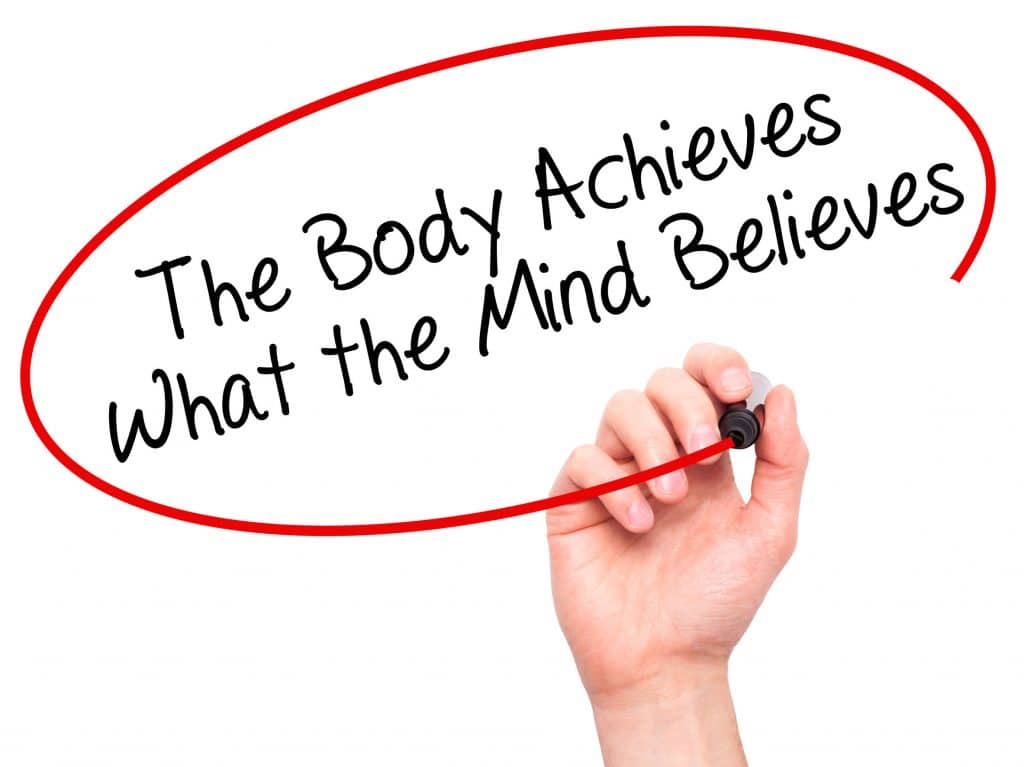Mindfulness is when you focus on being intensely aware of what you’re sensing and feeling in the moment, without interpretation or judgment. It’s a type of meditative state because you have one focus.
Constantly planning, problem-solving, daydreaming, or thinking negative or random thoughts is exhausting to both your mind and body. It also makes you more likely to be stressed, have anxiety, and have symptoms of depression.
Practicing these beginner-friendly mindfulness exercises can help you direct your attention away from this kind of thinking and engage with the world around you.
Recommended Beginner Mindfulness Exercises
Focus on Your Breathing
When you have negative thoughts, try to sit down, take a deep breath and close your eyes. Focus on your breath as it moves in and out of your body.
Sitting and breathing for even just a minute can help dramatically. It is amazing! It moves your body into the para-sympathetic system, which is in charge of rest and restoration. It works every time.
Body Scan Meditation
Yoga Nidra is a great meditation style that focuses on every part of your body.
You lie on your back with your legs extended and arms at your sides with your palms facing up. Focus your attention slowly and deliberately on each part of your body, from head to toe. Be aware of any sensations, emotions, or thoughts associated with each part of your body.
You can do this in silence or find guided body scan or Yoga Nidra meditations on the web.
Sitting Meditation
Sit comfortably with your back straight, feet flat on the floor and hands in your lap. Breathing through your nose, focus on your breath moving in and out of your body.
Notice the physical sensations or thoughts that arise during your meditation, let them move through your mind like clouds in the sky, and then return your focus to your breath.
Mindful Posture
Be aware of your posture at all times; standing, sitting, walking. Not only is this good for your physical health it improves self-esteem and confidence.
Mindful Listening
Really focus on the music you are listening to and try to identify different instruments, as well as the emotions and physical sensations you feel you are feeling.
Mindful Eating
Eat slowly and identify smells, textures, tastes of the food you are eating, and describe them.
Mindful Walking
Pay attention to everything around you. Try to stay in the present as you are walking and see how long you can do it before your mind runs off to the past or future.
When you notice your mind has wandered, bring it back to the now and what is right in front of you.
Bell
Ring a bell and close your eyes. Try to be aware of how long you can hear the sound.
Look Around
Yard, House, Porch, Park – Look at everything as if it was the very first time you are seeing it, like a child. Describe your experience.
Use Mantras
Your subconscious learns by repetition. This is why mantras are so effective and have been around for 1,000’s of years. You simply repeat the same word or phrase for as long as you like.
May I be happy and may I live with ease.
I am the one here now
I am in love with who I’m becoming. …
I am worthy. …
I am healthy, I am stable, I am sound. …
How Often Should I Practice Mindfulness Exercises?
It depends on what kind of mindfulness exercise you plan to do.
Simple mindfulness exercises can be practiced anywhere and anytime. Research shows that engaging your senses outdoors is particularly effective.
For more structured mindfulness exercises, such as body scan meditation or sitting meditation, you’ll need to set aside time when you can be in a quiet place without distractions or interruptions. You might choose to practice this type of exercise early in the morning before you begin your daily routine.
Try to practice mindfulness every day for about six months.
Over time, you’ll find this practice becomes effortless and you look forward to using it. It is a beautiful commitment to reconnecting with and nurturing yourself.

